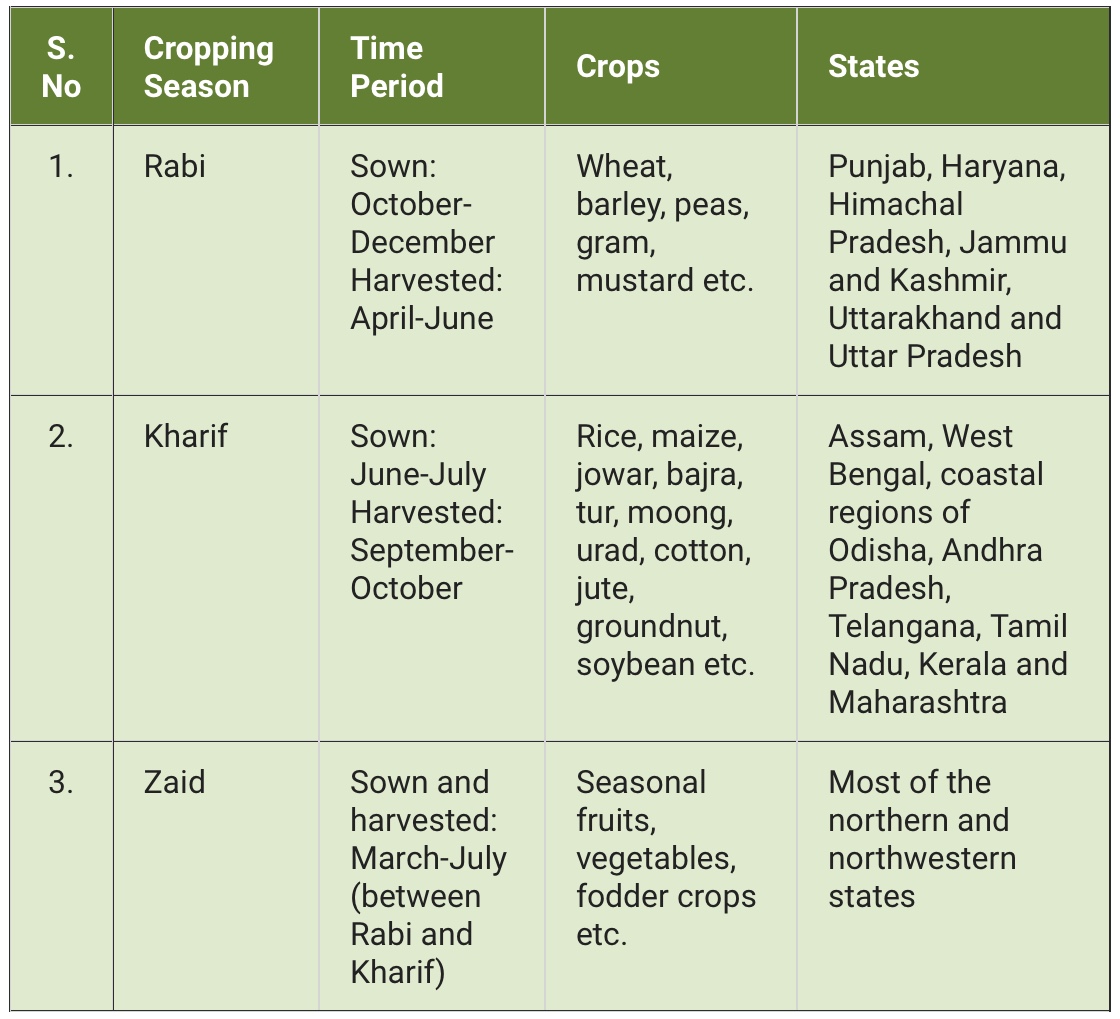Agriculture
National Conference on Kharif Crops 2020
- 17 Apr 2020
- 5 min read
Why in News
Recently, the Union Minister of Agriculture and Farmers’ Welfare addressed the National Conference on Kharif Crops 2020 through a video conference.
Key Highlights of the Conference
- Aims:
- To discuss various issues and list out steps in consultation with the States about preparedness for Kharif cultivation in view of the lockdown situation.
- To take up doubling of farmers’ income in mission mode.
- To urge states to explain the Pradhan Mantri Fasal Bima Yojana and Soil Health Card Scheme to each farmer.
- To implement the Home Ministry exemptions and relaxations for the Agricultural sector while ensuring social distancing and social responsibility norms.
- To start using the e-NAM (National Agriculture Market) extensively.
- Target of foodgrains production for the Financial Year 2020-21 has been fixed at 298.0 million tonnes.
- During the FY 2019-20, against the foodgrain production target of 291.10 million tonnes, higher production of about 292 million tonnes is anticipated due to enhancement of area coverage and productivity of various crops.
- This was possible due to the various technological advancements including varietal improvement as well as dedicated and coordinated efforts of Central and State Governments in spite of the present situation of climate change along with change in rainfall patterns.
- The cultivable/agriculture land has reduced by about 2.74 million hectare during the last two decades.
- However, during the same period the Gross Cropped Area (GCA) has increased from 182.28 million hectare to 196.50 million hectare, with net area sown remaining largely unchanged at 140 million hectare.
- Gross Cropped Area: It represents the total area sown once as well as more than once in a particular year. When the crop is sown on a piece of land for twice, the area is counted twice in GCA.
- Net Area Sown: It represents the total area sown with crops. The area sown more than once in the same year is counted only once.
- The production of foodgrains has increased from 169.92 million tonnes to 284.96 million tonnes in the corresponding period due to various technological and policy interventions.
- However, during the same period the Gross Cropped Area (GCA) has increased from 182.28 million hectare to 196.50 million hectare, with net area sown remaining largely unchanged at 140 million hectare.
- It was highlighted that the agriculture and horticulture sector in the country have become a key driving element for economic development in many States.
- India is the second largest producer of vegetables, after China.
- Although India has become food surplus, it still needs to accelerate the production and productivity of agriculture and horticulture sectors for ensuring food and nutritional security in the rural areas.
- The major new initiatives for increasing production of crops and income of the farmers were appreciated.
- “Per Drop More Crop” under flagship Pradhan Mantri Krishi Sinchayee Yojana (PMKSY).
- Paramparagat Krishi Vikas Yojana (PKVY).
- Pradhan Mantri Fasal Bima Yojana (PMFBY).
- e-NAM initiative.
- Pradhan Mantri Kisan Samman Nidhi (PM-KISAN) Yojana.
- Pradhan Mantri Kisan Pension Yojana (PM-KPY).
- Pradhan Mantri Annadata Aay Sanrakshan Abhiyan (PM-AASHA).
- It was informed that All India Agri Transport Call Centre has been started to ensure that agriculture is not affected.
- The call centre will facilitate inter-state movement of perishables in the current situation of lockdown due to the Covid-19 threat.
- For Rabi crops, all States will ensure procurement at Village/Block levels as farmers are not allowed to move out.
- In addition, steps are taken for Direct Marketing/purchasing of crop produce from farmers.
- Relaxation has been given for movement of trucks/ vehicles loaded with seeds and fertilizers to ensure timely availability of such inputs at Village/Block levels across the country.
- The format of State Action Plan (SAP) for advance planning and implementation of the National Food & Nutritional Security Mission (NF&NSM) has been simplified.
- NF&NSM is mainly a mandate for production of foodgrains and is implemented on projectised mode through State Agriculture Departments across the country.
- Project Monitoring Teams at Central and State levels are guiding in formulation of SAPs and also monitoring through field visit and farmers’ interaction.
- Geo-tagging of various interventions are also undertaken to ensure transparency in the programme implementation.





